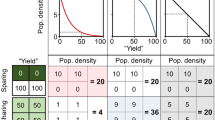Abstract
Dispersed development, also referred to as urban growth or sprawl, is a pattern of low-density development spread over previously rural landscapes. Such growth can result in adverse impacts to air quality, water quality, human health, aquatic and terrestrial ecosystems, agricultural land, military training areas, water supply and wastewater treatment, recreational resources, viewscapes, and cultural resources. The U.S. Environmental Protection Agency (U.S. EPA) is charged with protecting public health and the environment, which includes consideration of impacts from dispersed development. Specifically, because federal infrastructure projects can affect the progress of dispersed development, the secondary impacts resulting from it must be assessed in documents prepared under the National Environmental Policy Act (NEPA). The Council on Environmental Quality (CEQ) has oversight for NEPA and Section 309 of the Clean Air Act requires that U.S. EPA review and comment on federal agency NEPA documents. The adverse effects of dispersed development can be induced by federal infrastructure projects including transportation, built infrastructure, modifications in natural infrastructure, public land conversion and redevelopment of properties, construction of federal facilities, and large traffic or major growth generation developments requiring federal permits. This paper presents an approach that U.S. EPA reviewers and NEPA practitioners can use to provide accurate, realistic, and consistent analysis of secondary impacts of dispersed development resulting from federal infrastructure projects. It also presents 24 measures that can be used to mitigate adverse impacts from dispersed development by modifying project location and design, participating in preservation or restoration activities, or informing and supporting local communities in planning.
Similar content being viewed by others
References
Benfield, F.K., Raimi, M.D. and Chen, D.D.T.: 1999, 'Once There Were Greenfields', Natural Resources Defense Council, New York, NY, USA.
Clark, R.: 2001, 'Another Victim of Urban Sprawl: Military Training,' ICMA Baseline: The Newsletter of ICMA Military Base Re-use Consortium. 6, 1-5.
CEQ: 1997, 'Considering Cumulative Effects Under the National Environmental Policy Act', Council on Environmental Quality, Executive Office of the President, Washington, DC, USA.
Duany, A., </del>Plater-Zyberk, E. and Speck, J.: 2000, Suburban Nation: The Rise of Sprawl and the Decline of the American Dream, North Point Press, New York, NY, USA.
DOT NHSA: “Traffic Safety Facts 2000, Overview” (2000). 20 September 2002. <www.nhtsa.dot.gov/people/ncsa/factsheet.html>
Ewing, R., Pendall, R. and Chen, D.: “Measuring Sprawl and Its Impact” Smart Growth America. (2002). 20 September 2002. < http:// www.smartgrowthamerica.org>
Griffin, R., Jr.: 1991, 'Introducing NPS Water Pollution', EPA Journal. 17(5), 6-9.
NCHRP: “Guidance for Estimating the Indirect Effects of Proposed Transportation Projects.” Transportation Research Board Report 403, (1998). 20 September 2002. <http:// www.nationalacademies.org/trb/bookstore>
Otto, B., Ransel, K., Todd, J., Lovaas, D., Stutzman, H. and Bailey, J.: “Paving Our Way to Water Shortages: How Sprawl Aggravates Drought.” (2002). 20 September 2002. <http:// www.Americanrivers.org/landuse/ sprawldroughreport.htm>
Paul, M.J. and Meyer, J.: 2001, 'Streams in the urban landscape', Ann. Rev. Ecol. Syst. 32, 33-65.
Schmidt, C. W.: “The Specter of Sprawl.” Environmental Health Perspectives, 106:6, (1998). 20 September 2002. < http://ehpnet1.niehs.nih.gov/docs/1998/106-6/focus.html>.
of_imperviousness.htm>
Terborgh, J.: 1989, Where Have All the Birds Gone?, Princeton University Press, Princeton, NJ, USA.
TRB and NRC: 1999, Land Use Impacts of Transportation: A Guidebook, National Academy Press, Washington, DC, USA.
USEPA: “Encouraging Smart Growth” (2003a). 20 September 2002. <www.epa.gov/smartgrowth/ index.htm>.
USEPA: “Smart Growth Policy Database” (2003b). 20 September 2002. <http://cfpub.epa.gov/ sgpdb/sgdb.cfm>
USEPA: 2001, 'Our Built and Natural Environments: A Technical Review of the Interactions between Land Use, Transportation, and Environmental Quality,' EPA 231-R-01-002 U.S. Environmental Protection Agency, Office of Development, Community, and Environment Division, Washington, DC, USA.
USEPA: 2000, 'Projecting Land Use Change: A Summary of Models for Assessing the Effects of Community Growth and Change on Land-use Patterns', EPA 600-R-00-098 U.S. Environmental Protection Agency, Office of Research and Development, Washington, DC, USA.
Williams, D.C.: 2000, Urban Sprawl, ABC-CLIO, Inc., Santa Barbara, CA, USA.
Rights and permissions
About this article
Cite this article
Southerland, M.T. Environmental Impacts of Dispersed Development from Federal Infrastructure Projects. Environ Monit Assess 94, 163–178 (2004). https://doi.org/10.1023/B:EMAS.0000016886.16085.39
Issue Date:
DOI: https://doi.org/10.1023/B:EMAS.0000016886.16085.39




